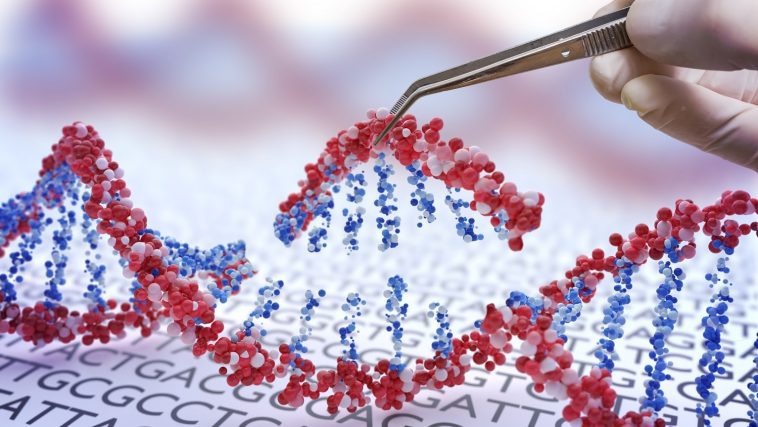[Originally published as part of Transhumanism]
The First Temptation
Transhumanism is merely a modernized form of the original temptation that resulted in humanity being plunged into darkness. The serpent, Satan (Revelation 12:9), tempted Eve by telling her that she could be better than what God intended her to be (Genesis 3:4–5). Eve was
- living in a paradise,
- in perfect communion with her Creator and her husband,
- with a perfectly healthy, immortal body,
- surrounded by trees that produced all the food she would ever need.
And yet, Satan was able to convince her to be discontent because there was something even better that she was being denied.
Satan claimed that God was withholding something good from Eve: the knowledge of good and evil. When she sinned, Eve did indeed gain experiential knowledge of evil. And Adam followed into sin. But was their final state better than the original?
- After sin, Adam and Eve knew shame.
- Eve would experience pain in childbirth,
- and Adam’s work would now be difficult and unpleasant at times.
- They would experience death.
- More importantly, they lost the perfect communion they once had with their Creator.
Pursuing a path that is contrary to God’s instruction never results in something better. The best possible condition for man is to be exactly who and what God created him to be.
Altering humanity to be something allegedly better than what God created is clearly not a path that we should pursue. But, restoring humanity to health brings us closer to the original very good state in which we were created. It is a worthy pursuit, even though a full reversal of the curse is something only Christ can (and will) accomplish (Acts 3:21; Revelation 22:3).
Other Organisms
What about the genetic engineering of other organisms? There are fewer restrictions here because God gave man dominion over all the creatures of the earth (Genesis 1:26–28). We are to care for the animals, but we are also permitted to use them for constructive purposes. There are some constraints on what is permitted. For example, animals should not be mistreated or needlessly harmed (Deuteronomy 22:6, 25:4; Exodus 23:19). But we are permitted to kill animals for the purpose of food (Genesis 9:3). Thus, animal death to preserve human life is permitted.
It is therefore morally right to test medicines or genetic modification on animals before such methods are used on humans, particularly when there is the possibility of harm. The Bible indicates that humans have more value to God than animals do (Matthew 10:31). The goal should always be one of restoration and not arbitrary alteration contrary to God’s purpose.
With plants or microbes, there are even fewer constraints since these are not alive in the biblical sense of the term “nephesh” (Leviticus 17:11). There is nothing inherently wrong with genetic modification of plants (as one example) to produce greater yields for the purpose of providing food for more people. That’s a good and righteous goal.
The main caution here is the science. We do not always know how the modification of a gene will manifest in the organism (as demonstrated by the attempt to make blue roses). Will the resulting food be as nutritious for human consumption as the original? Will genetically modified food be as resistant to disease as the original? These are important questions and therefore genetic experimentation should always be approached with great caution.
One very good and ingenious use of genetic engineering involves bacteria. Bacteria are amazing. They are microscopic, self-replicating, biological machines capable of chemical synthesis. There are many varieties of them and they do many wonderful things. People tend to think primarily of the disease-causing varieties. But these are the exception; most bacteria are very helpful to life.
Could bacteria be genetically modified to produce chemicals necessary for medicine?
Geneticists have been able to isolate the genes in humans that produce insulin. In 1978, these genes were cloned and inserted into the genome of bacteria (E. coli). The result: these bacteria began producing insulin. Beginning in 1982, insulin produced by genetically modified bacteria was made available to treat people with diabetes. It is now one of the main ways this life-saving medicine is produced. This is a wonderful use of genetic engineering because it has the right method, motivation, and the goal of saving lives.
Conclusions
Genetic engineering is a powerful tool. It has already produced life-saving medications. Conversely, it could be misused to create more lethal forms of known pathogens. Genetic engineering might be used to correct disease-causing mutations. Or it might be used to alter the genome in ways God never intended.
Of all modern technologies, genetic engineering has perhaps the greatest potential to bring about great good or to do unimaginable harm. Which outcome occurs will be largely determined by how people choose to use this technology. I encourage Christians to take the lead in this field, cautiously performing science in the right way with the right motives and goals – all for the glory of God.
This brief article is not intended to answer or even address all the ethical considerations involved in modifying genetic sequences. Rather, the goal is to introduce the topic so that Christians can be thinking through the scientific and moral implications as these issues become increasingly relevant.
Whatever specific details are under consideration, we have three overarching biblical principles to follow.
- We must use the right method; this involves proceeding with extreme caution so that humans are not harmed.
- We should be motivated by love of God and gratitude for His provisions.
- Our goal should always be one of restoration and healing in accordance with God’s purpose for humanity.







